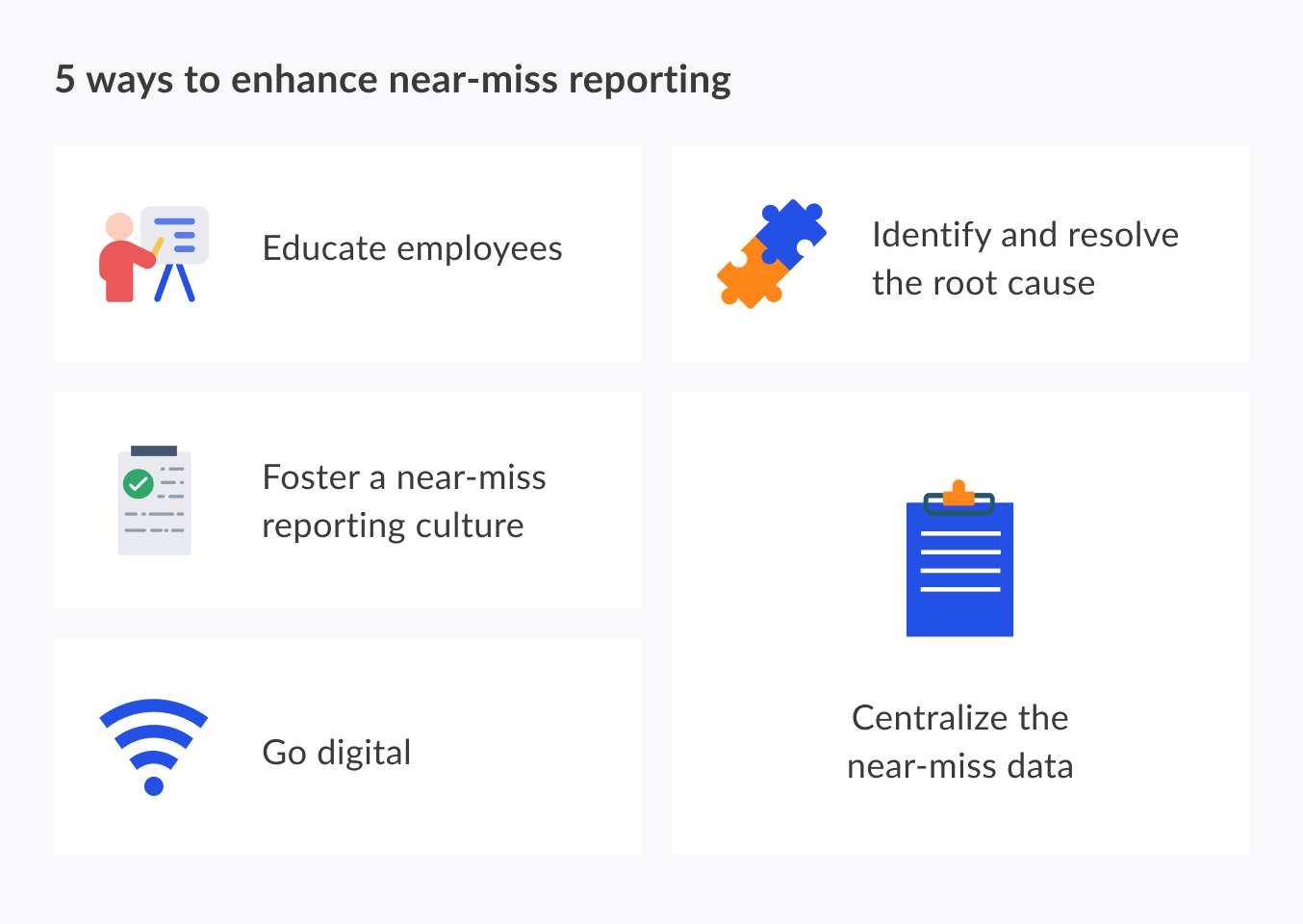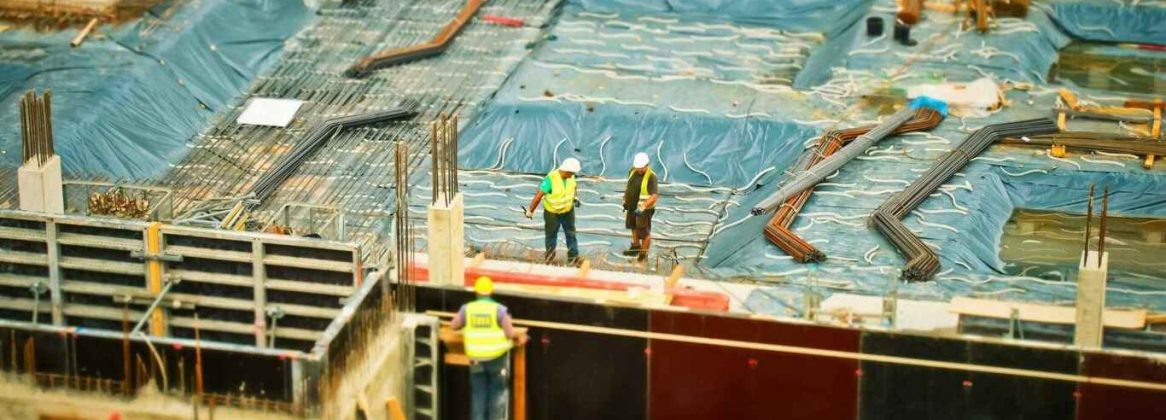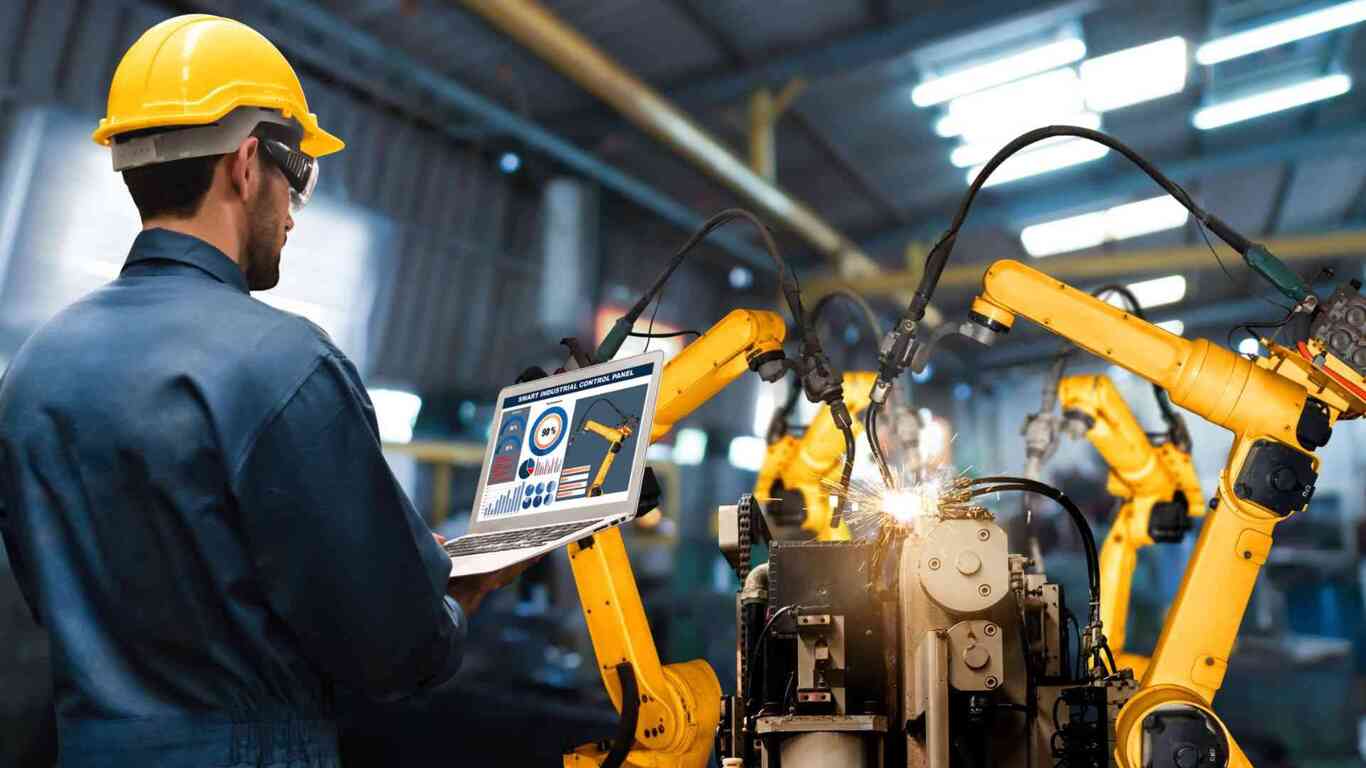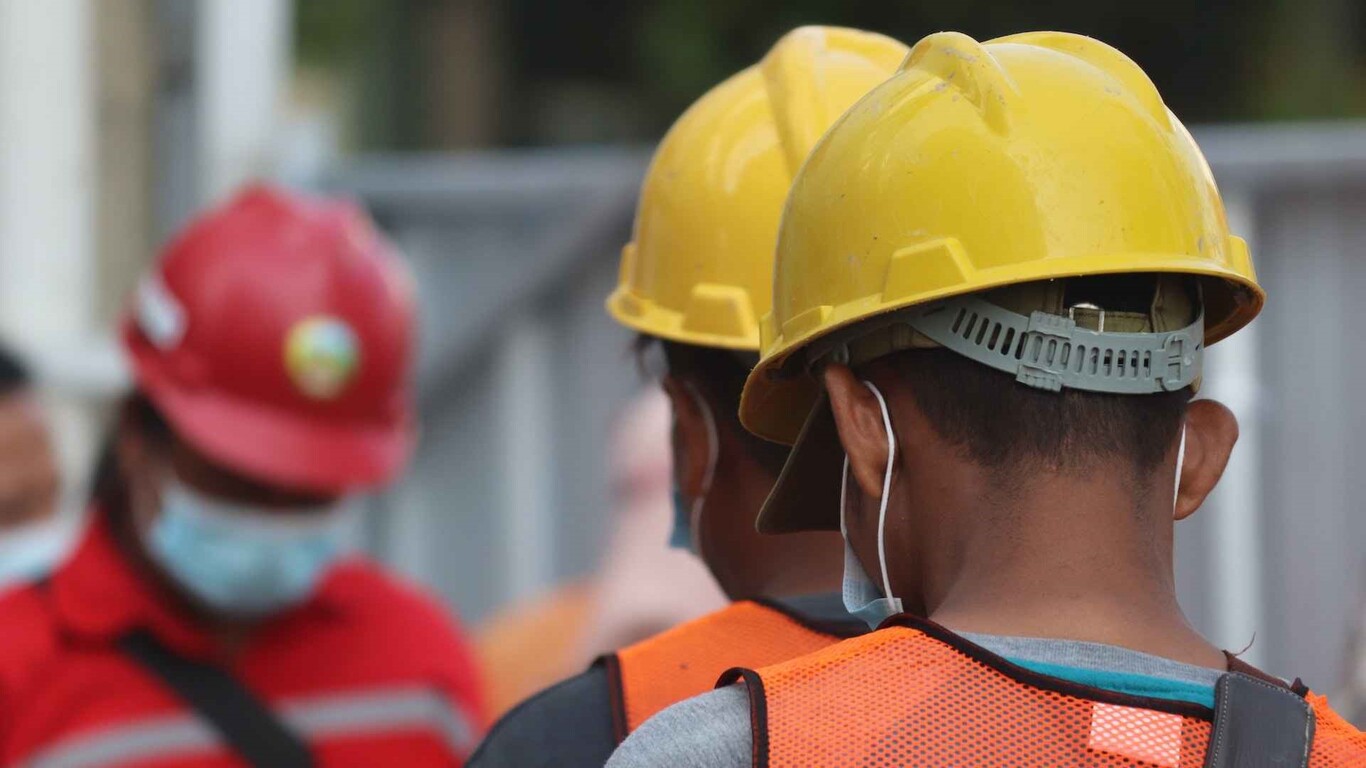The Bureau of Labour Statistics records over 150000 cases of injuries on construction sites each year. These injuries are often preceded by ‘near misses’, close calls that if reported could have prevented the occurrence of the injury. In this article, we look at 5 ways you can establish a robust near-miss incident reporting culture in your workplace and encourage employees to always report near misses.
The worker that slips on a liquid spill, and falls without sustaining an injury. The worker with loose hair or clothing that gets caught in machinery but is quickly removed without bodily harm. The worker at height without adequate PPE who falls but escapes unhurt. A contractor who uses an equipment that is ‘locked out’ without signage but realizes in time to stop work. What these incidents have in common is that they had the potential to cause injury or damage but were avoided by circumstance. On another day, the workers may not have been so ‘lucky’.
The goal of every organization to have zero accidents in the workplace is only achievable if near-miss incidents are investigated and the necessary corrective measures are put in place. However, for a near miss to be investigated, it first has to be reported.
In a survey by the National Safety Council in 2017, 30% of workers said they’re afraid to report safety issues.
Here are 5 ways you can enhance near-miss reporting in your workplace:
- Educate employees
- Foster a near-miss reporting culture
- Go digital
- Identify and solve the root cause
- Centralize the near-miss data

Educate employees
Your near-miss reporting system should be clearly defined. Employees should know exactly why near-miss incident reports are required, how to send these reports, when these are due, and what management does with these reports.
There should be no conflict of ideas about the channels for reporting and management should establish clear lines of communication with employees. Remind employees that all incidents, no matter how ‘insignificant’ should be reported.
Previous near misses can be a matter of discussion during safety training and orientation. This will provide transparency and further underline the importance of reporting near-misses.
Foster a near-miss reporting culture
One of the major reasons near misses are unreported is the fear of ‘punishment’. Employees, concluding that their errors instigated the near-miss incident or they were negligent with PPE during the process, may not want to draw attention to the incident and risk being reprimanded for their ‘mistakes’.
Management should use any report as an opportunity to set a precedent that all near-misses in the workplace will be handled calmly. Also, giving employees the option of an anonymous reporting procedure will eradicate blaming and shaming on a sub-conscious level and make it easier for many to send in their reports.
Go digital
With visually unappealing and ‘formal’ paper-based manners, it’s not always convenient for employees to report near-misses. Besides, many workers will prefer to send in reports after work hours and may forget to do so before signing out.
But with a Safety solution, workers will be equipped with a digital near-miss reporting tool where they can fill in reports from the comfort of their mobile devices anywhere and anytime. The platform can be personalized based on departments and for better results, should be able to work offline.
Also, workers can attach pre-stored images from their mobile phones into the reports (in cases when they forget to take images of the working area). And, if they are unsure of the method or proper reporting hierarchy, they will have access to line managers for real-time communication and guidance.
Identify (and solve) the root cause
After educating employees on the importance of filing reports and making it easier for them to do so, the next step is to act on these reports. Employees will be more likely to report any future near misses in the workplace if timely and transparent corrective actions are taken on all reports.
The corrective measures should center on the four E’s of accident prevention (engineering, educational, enforcement, or encouragement) and should be implemented upon determining the root cause of the near-miss.
After implementation, managers can provide oral recommendations for the future and conduct additional physical inspections, where applicable.
Centralize the near-miss data
Even after the corrective measures have been taken, it’s still important to have access to the initial report and the results of the investigation. These reports can be added to the regular safety briefs/ training and may be required during audits, OSHA investigations, and Government inspections.
A digital platform allows you to centralize this information and easily refer to it during briefs or in identical near misses. And unlike paper reports which can be damaged/ easily misplaced, cloud storage provides more network resilience in cases of fire outbreaks or natural disasters.
Another advantage of digitally centralizing your near-miss reports is the ability to use machine learning/ AI to analyze the data and establish patterns across near-miss cases to guide a more accurate course of action.
Conclusion
In handling near misses, swift action is very important. When the reports are prioritized quickly, the affected workers can more easily recall the incident. And management can – without further ado – determine the root cause and take reasonable steps to safeguard the workplace.
Additionally, technology should be at the forefront of your near-miss reporting procedure. This will make it easy and convenient to report near-misses in the workplace besides allowing managers to monitor near-miss report trends.
Why Maximl?
Maximl’s solution for Safety lets employees configure near-miss reports with image, location, and text attachments from the field and share it with managers in real-time. Hence enabling organizations to quickly discover root-cause and solve matters in-house, avoiding the damage that a serious accident can bring.




